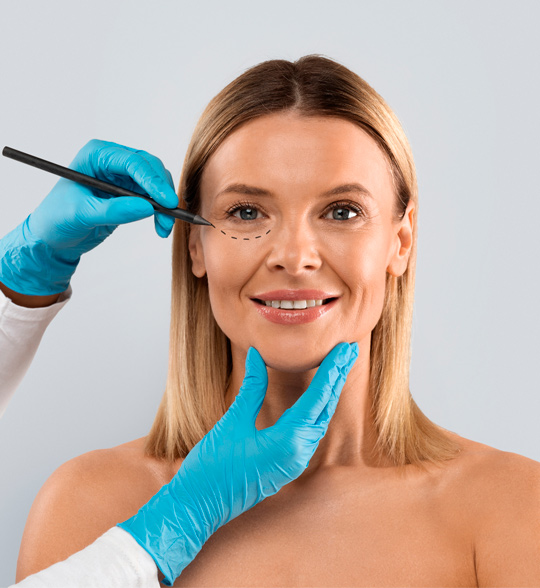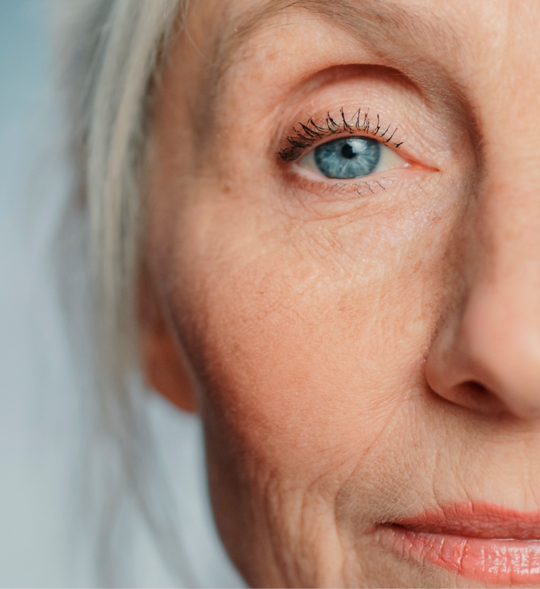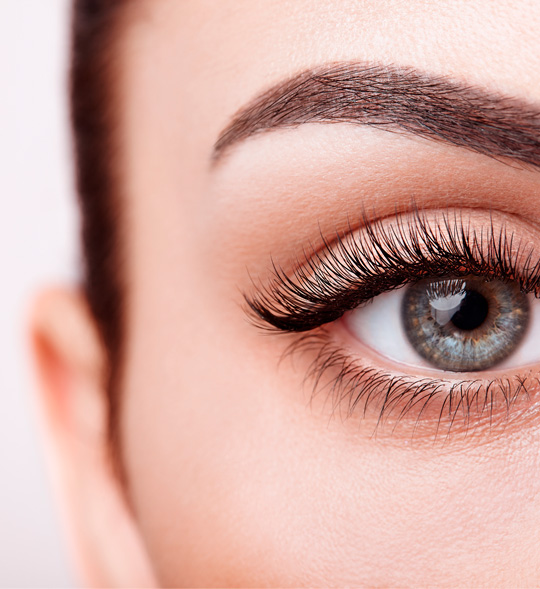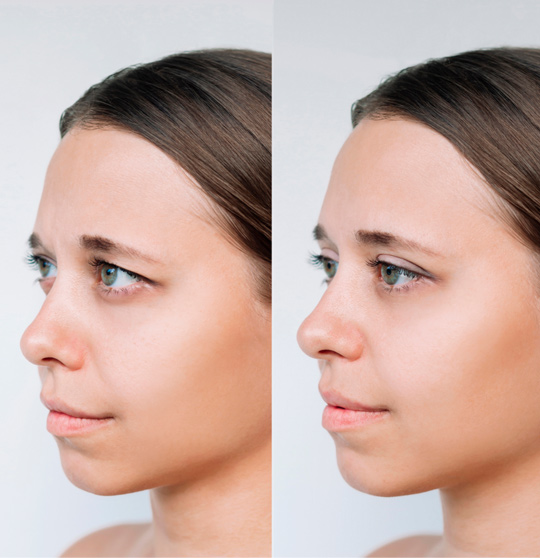Eye aesthetics
Transform
your look with
aesthetic treatments
Aesthetic eye surgery aims to give your eyes a more youthful, rested appearance through surgical procedures.


The hollow eye
Hollow eye surgery
Hollow eyes generally appear from the age of 30, first with a wide palpebral crease, then with a distance between the 2 eyelids. Gradually, the fat that fills the upper eyelid moves backwards, creating the hollow, dull and tired appearance of the eye.
The surgery involves removing a small amount of skin, revealing the color of the iris and the white of the conjunctiva.

Eyebrows
Eyebrow surgery
Before any eyebrow surgery, it is important to consider the shape and positioning of the eyebrows. In fact, the degree to which the eyebrow has fallen and its shape will greatly influence the surgical procedure.
For women
A woman’s eyebrow may or may not have an arched shape, but what most often characterizes it is the elevated position of its lateral end.
In men
In men, the eyebrow is generally thicker, more horizontal and lies directly above the orbital rim.


The eyelids
Eyelid surgery
Each eyelid surgery is customized to fit the unique morphology of each face.
It is important to consider certain factors such as :
- Eyebrow shape and position
- The distance between the upper and lower eyelids
- Opening the external angle of the eyelids
- Eye color and skin quality

The different aspects treated by eyelid surgery:
Palpebral crease correction
The palpebral crease is the natural crease where the eyelid folds when open. This purely cosmetic surgery aims to adjust this fold to achieve a result more in line with cultural preferences or norms.
Excess fat
Pockets of fat can sometimes form on the upper eyelid, giving the eye a puffy appearance. Surgery can remove this excess.
Correction of drooping eyelids
If the upper eyelids tend to droop and affect vision, this surgery may be recommended to remedy this functional problem.
Our specialists
Our team of experts in FMH Ophthalmology
and Ophthalmic Surgery FMH
Discover our experienced ophthalmologists

Doctor
Marouen Berguiga
Specialist FMH
in Ophthalmology
and Ophthalmic Surgery
Eye diseases
- Treatment of visual disorders in children and adults
Anterior segment surgery
- Cataract surgery
- Glaucoma surgery
- Refractive surgery
- Corneal transplant
- Oculoplastic surgery
- Management of keratoconus
- Intravitreal injections
Medical retinal treatment
Languages spoken :
French, English, Italian, Arabic

Docteur
Augustina Grigaite
Specialist FMH
in Ophthalmology
and Ophthalmic Surgery
Eye diseases
- Treatment of visual disorders in adults
Anterior segment surgery
- Cataract surgery
- Refractive surgery
Languages spoken :
French, English, German, Italian, Russian, Lithuanian
FAQ
Some quick answers to your questions
On average, how long does an aesthetic eye operation last?
On average, an operation takes about 1 hour. You should also allow 1 hour before the procedure and 1 hour for post-operative follow-up.
Can I go home after the operation?
What form of anesthesia is used?
In the vast majority of cases, the operation is performed under local anaesthetic via an injection that you will hardly notice.
Make an appointment at the clinic
Appointments can be booked directly on our website or via the OneDoc app.
Appointments for laser surgery can only be made via our WhatsApp line.
In case of emergency, please contact us directly on 022 365 18 80
